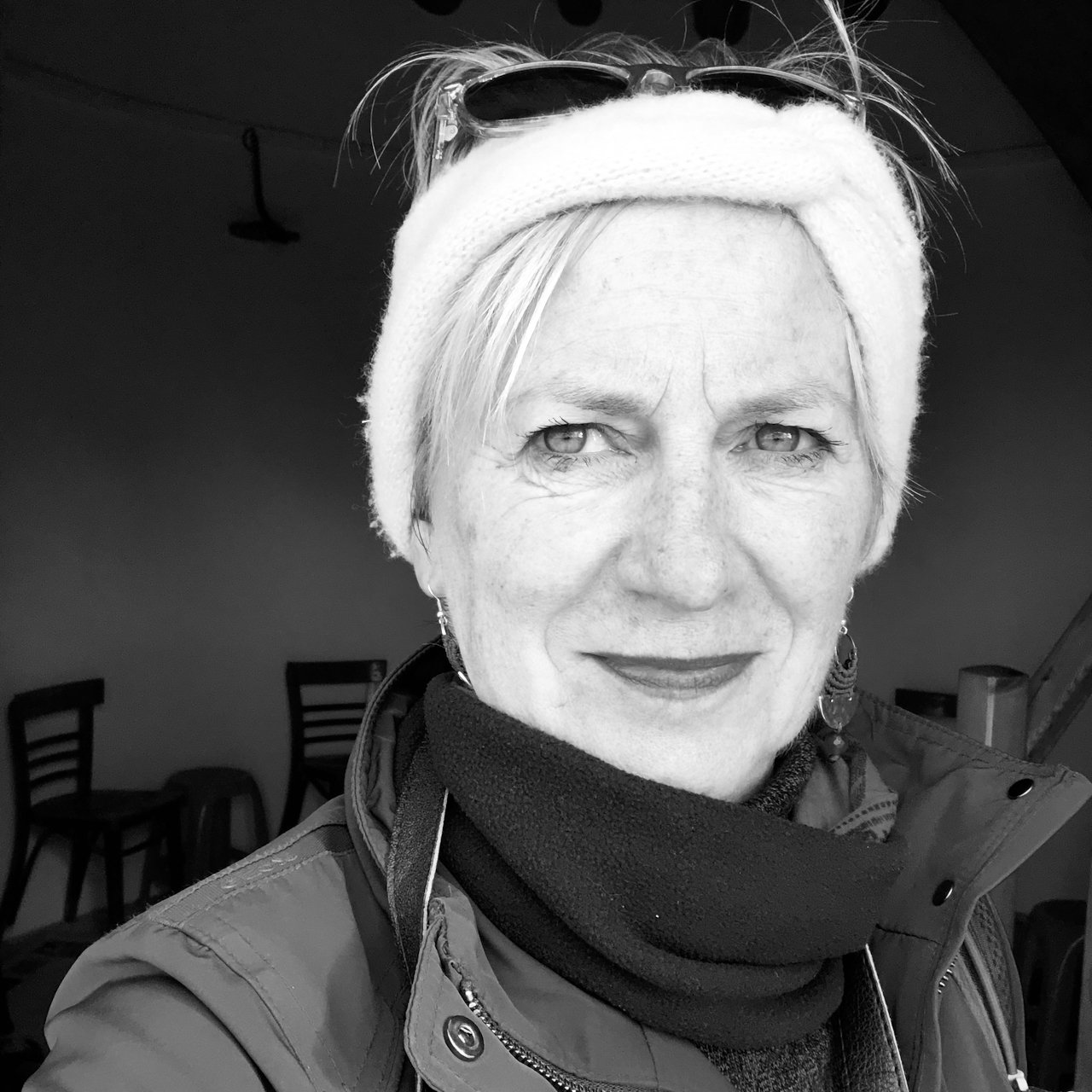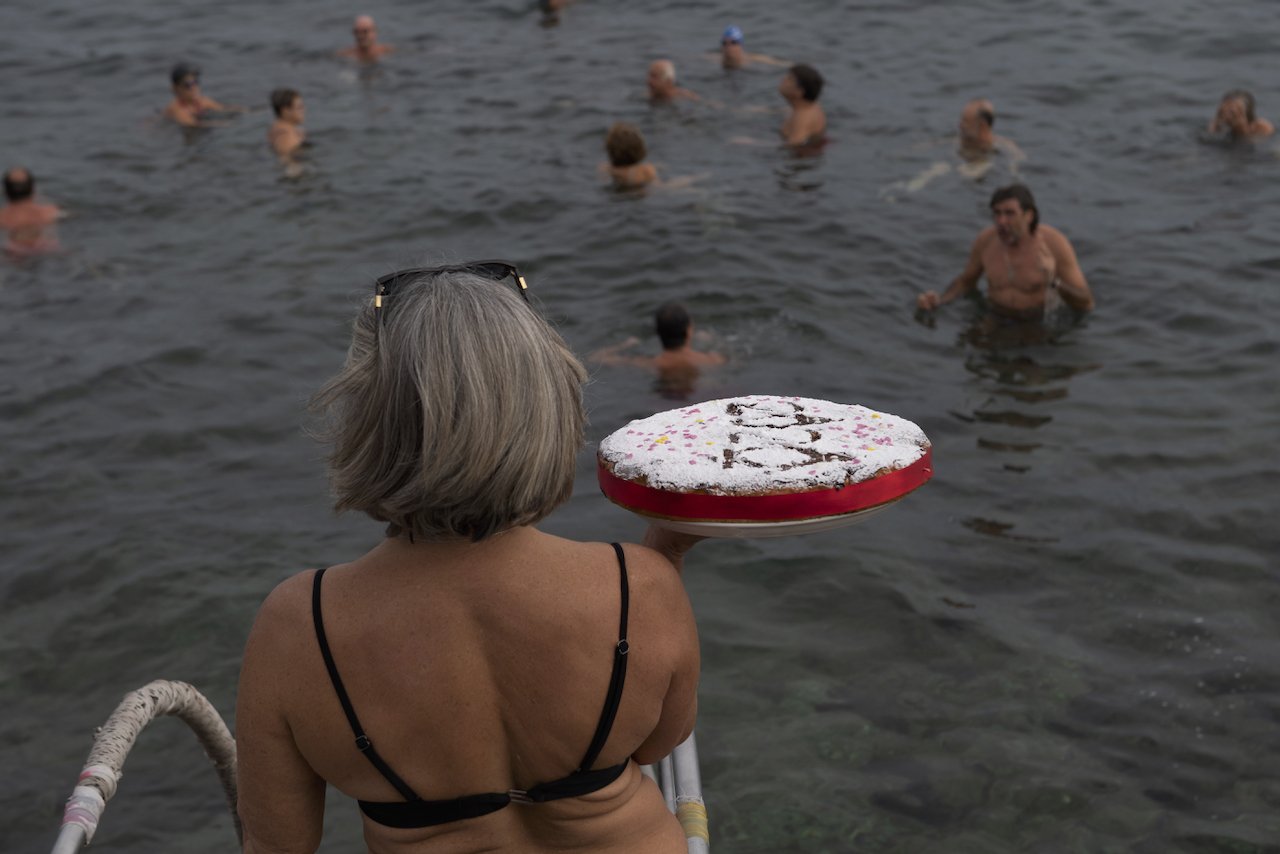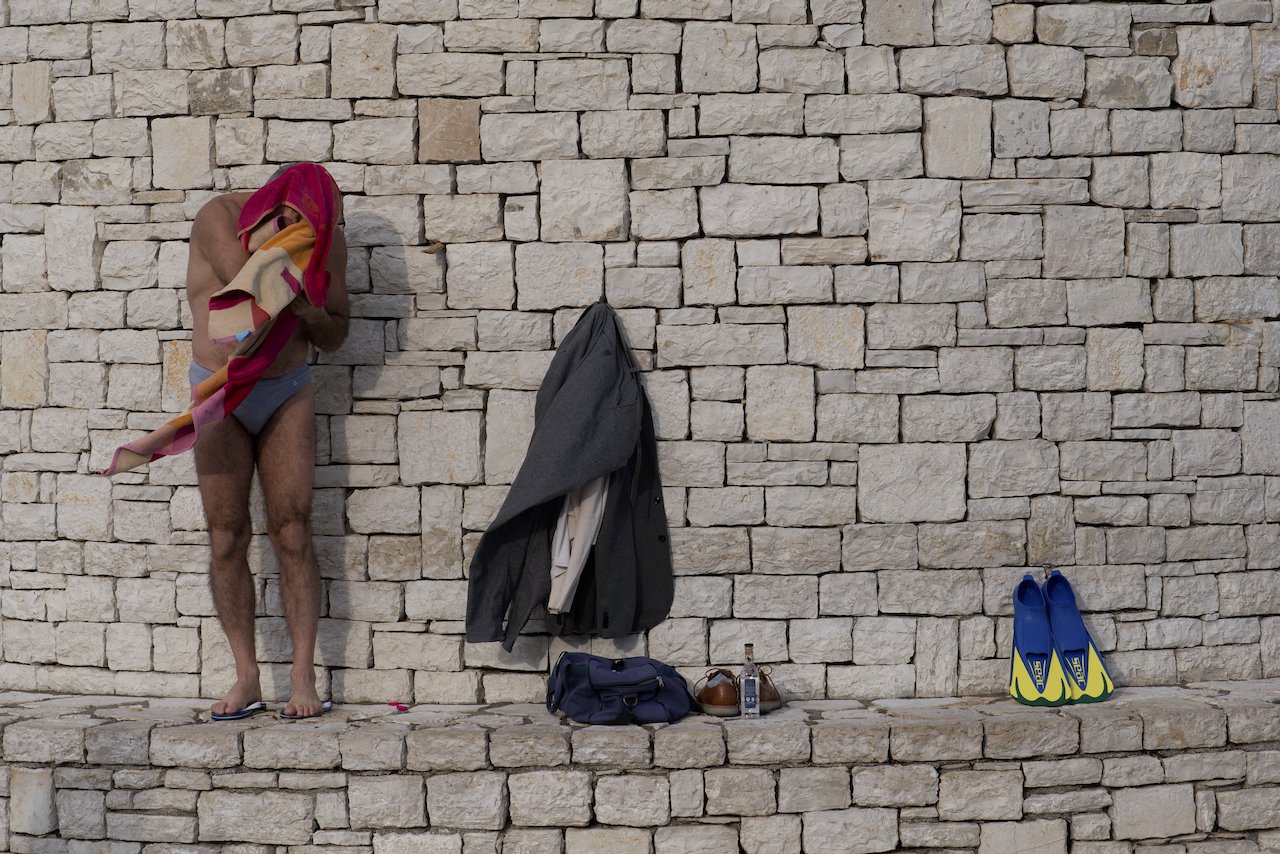Bernadette Mergaerts: Cold Waters, Warm Stories
Welcome Bernadette, we are very excited to have you today with us to discuss about your work.
Who is Bernadette Mergaerts and how did the passion for creating begin?
I am a visual artist based in Brussels (Belgium) using photography, video, text and sound to express myself artistically. I was raised in a village close to nature and as a young rather solitary person I spent most of my free time outdoors or in the village library. My gaze, perceptions and curiosity were very much influenced in my early childhood when my aunt was taking me to museums, live performances, cinema and gave me full access to her bookshelves packed with artbooks and all the great novels of French literature. My father was a pianist, organist, choir conductor and composer and both my parents had great voices. It is needless to say that I was raised with plenty of music and without a television or car. Other family members had photo cameras and basic dark room equipment which they lend to me when I was an adolescent. At seventeen I wanted to study film directing but was advised to go to university first. I became a geographer and self- taught photographer.
I think all my creations are still a result of these very mixed influences and today other (contemporary) artists and people I meet in general influence my work.
Can you tell us a bit about your previous work?
My previous work included mostly photography with book publications. In 2015 I started a large project called B’Squares. A photographic series of square photos in relation to my walks and ventures close to mayor squares of Belgian, Spanish and Greek towns and villages. I curated my own exhibitions and showed and still show the work in unusual private or public places sometimes outdoors. For this series I began to document my walks by means of short videos where sound triggered the image taking. The resulting short film B’squares was edited by my daughter in 2017. There was no scenario and the editing was done from the pre-sorted raw materials I gave her. For my most recent book I followed the winter swimmers of the island of Kérkyra (Greece) in their daily ventures from 2017 until 2020. In 2021 my book entitled Flisvos was published. The title word is a sound because all my visual work is still very much influenced by natural sounds and music. Flisvos is a Greek word suggesting the soft clapping of a wave touching the shore. While working on this project in Greece other projects emerged linked to meetings with local artists: writers, musicians, painters and dancers.
Winter Swimmers has been described as a ‘‘poetic walk and a visual notebook’’ What inspired you to document the winter swimmers of Kérkyra, and how did this concept evolve into a film?
I met the swimmers in 2017 in the city of Kérkyra. A taxi driver and a graphic designer suggested to make a book about them and I did. I started documenting my book project Flisvos by taking videos with my smartphone and recording sound because it was too cold to get out my pencil and notebooks. These rushes made it easier to remember whom I met, spoke to and what the atmosphere was. They helped me in editing my photographic work and decide about the narration for my book. After publishing Flisvos I stared cleaning my desk and external hard drives and for some reason could not throw aways these short videos and sound files. I considered making a teaser with them to sell my book but instead I teamed up with a young artist and video editor Evert De Maeyer and we made the short film Winter Swimmers. The good news is that all the translations of the interviews (from Greek to English) with the swimmers had already been done for the book and this made the subtitling easier. The narration for the book existed and in the short film we follow a similar one.
CONVERSATION ABOUT: "Winter Swimmers"
Your art is deeply collaborative. Did you work with any local artists, swimmers, or communities in Kérkyra during the making of Winter Swimmers?
I met the local author Katina Vlachou in Kérkyra in 2017. She visited my exhibition B’Squares became a friend and we started collaborating. I delivered the book cover for one of her novels. Katina writes at least a poem a day. We found that my abstract photography resonated with her minimal form of expression, haikus and tankas, and decided to make a book with the local publisher and graphic designer Fileni Lorandou: “Ni plus ni moins” (2018) translated to “Essentials” (2023). In 2018 I met the young Corfiot poet Vasilis Pandis and we collaborate since on his abstract book covers and we made an artist book “Balkan Men”. Kérkyra is a small city and some of it is car free. This means one comes across many people in the street. When I started photographing the winter swimmers, I regularly printed some of the photos and offered them a copy. They accepted me being around and they started telling me about their island, activities, joys, worries and invited me to local concerts, parades, dance performances, music rehearsals, poet meetings, religious festivities, walks, readings, exhibitions, sports competitions, church chimes, restaurants, weddings, … This resulted in a large network of women and men who helped me out at any time and without whom neither the books nor the film would exist. For me these enriching encounters provided a wonderful balance with the usually solitary work of photography. Currently the filmmaker Dimitra Delfi is finalizing a short film about my work in Kérkyra.
As a geographer and visual artist, you navigate both scientific and artistic disciplines. How do these fields intersect in your work, especially in Winter Swimmers?
I sometimes I ask myself: « Am I a geographer who photographs or a photographer who geographs? ”. I am both. The combination of a scientific education, including thorough planning and organization, and the need to let go and leave the interpretation of once work to the viewer suits me. For the Winter Swimmers project being a geographer helped me in preparing my scouting and field work. I come from an era where maps were still drawn and on paper. I have a good orientation and know and remember nearly all the places in the island. The first thing I do in the morning is check the weather and dress accordingly and get out to look for the right light. In geography training one had to choose between what was then called physical and human geography. I did combine both and this is reflected in my visual projects. Someone recently said that I approach the persons I photograph or film in an “anthropological way” and on the other hand my abstract photography reminds us of the images studied through microscopes and stereoscopes.
Do you consider yourself a winter swimmer, or did you become one while working on this project?
I don’t consider myself as a real winter swimmer but I was fully accepted by the communities when I joined them at their New Year swim in 2018. I even got a diploma from one of the communities. The project revived my love for swimming in general and whenever I go back to Kérkyra I try to join the communities. I also use the local swimming pools when I am in Brussels. Winter swimming in open water is something you have to build up by swimming every day and I am not there yet.
What reactions do you hope to elicit from audiences watching your project?
I hope watchers will get a feeling of slowing down and a feeling of peace while sharing the moments in and around the amazing city swimming spots of the Corfiot swimmers. I hope viewers will engage in extra respect for our natural environment where natural sounds, music, voices and real live conversations have full priority over just ‘noise’. I hope watchers will appreciate ‘the little things’ that life can offer to anyone anywhere.
In future projects, do you plan to explore similar genre intersections, or are there other genres you’re eager to explore?
I could do at least a couple of extra projects in Kérkyra but have no final plans yet. I know they take time and it would be great to have a production team working on the next projects. In another genre I would like to explore the possibility to be involved in the making of a feature film or documentary about a very specific person (it has been in my drawer for 10 years and preliminary research has been done). My role would be more of an “initiator” of the film.
Can you tease any upcoming projects or themes you’re excited to explore in your future works?
I still have a lot of “audio footage” and “still images” from the Flisvos/Winter Swimmers projects and will explore to make an autonomous multi-media creation this year. Themes I will explore are: artist/creator portraits and mixed media projects (away from flat prints and flat screens).
This marks the conclusion of the interview featuring our esteemed artist, Bernadette Mergaerts. Our community is growing steadily, with a continuous influx of skilled filmmakers and screenwriters joining us. Explore our other interviews, and consider scheduling one for yourself to showcase your creative endeavors.







